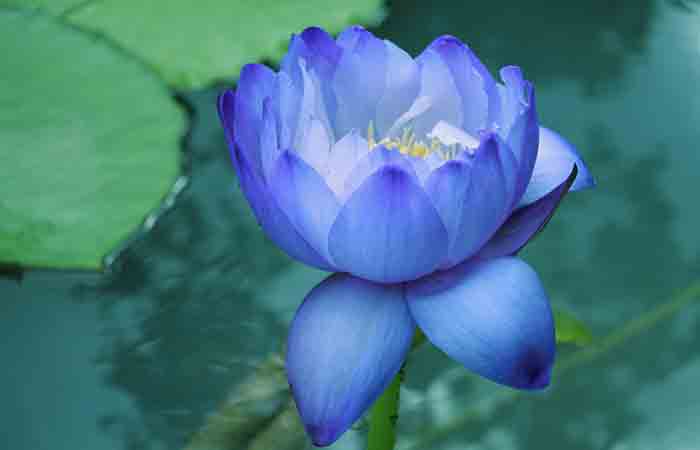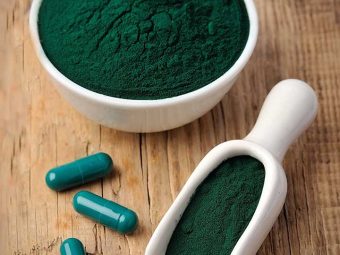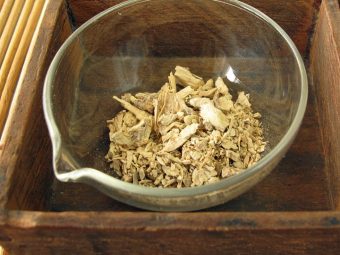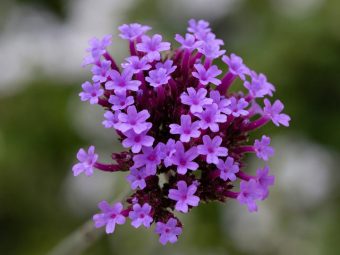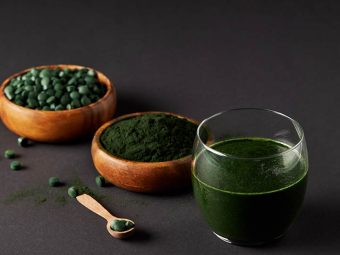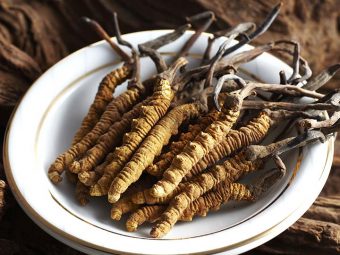6 Reasons To Have Blue Lotus Flower
Egyptians, Mayans, and followers of Ayurveda have benefited from the goodness of the blue lotus.

Image: Shutterstock
The ancient Egyptians revered the blue lotus flower and cherished its psychoactive properties. You will find it as a motif in many of their ancient paintings and architecture. The blue lotus flower symbolized regeneration, fertility, water, and plant life. Today, it is highly sought after for its euphoric effects and medicinal properties. In lower doses, the blue lotus flower provides anxiety relief and acts as a sleep aid. This article explores the health benefits of the blue lotus flower and explains how to use it. Read on!
 Know Your Ingredient: Blue Lotus Flower
Know Your Ingredient: Blue Lotus FlowerWhat Is It?
A water lily, Nymphaea caerulea, commonly found in Africa and Asia.
What Are Its Benefits?
It has psychoactive effects that may reduce anxiety and calm nerves. It may treat diarrhea.
Who Can Consume It?
Those dealing with sleep disorders, anxiety, aging-related issues, and irregular menstrual cycles can use this flower.
How Often?
There is no general accepted dosage, but 0.17 oz. (5 grams) per person in 250-500 mL of lotus water is accepted.
Caution
High doses can cause issues like altered mental state, anxiety, chest pain, brief periods of oxygen limitation, and hallucinations.
In This Article
What Is The Blue Lotus Flower?
The blue lotus flower (Nymphaea caerulea) is a water lily found in Africa and Asia. It is also known as blue Egyptian lotus, blue water lily, and sacred blue lily of the Nile. It is an aquatic perennial plant and usually grows along lakes and rivers, including the Nile.
The blue lotus flower is traditionally used as a sleep aid, detoxifying agent, and aphrodisiac. It is rich in antioxidants and widely used in Ayurveda for relieving diarrhea, fevers, urinary problems, and heart palpitations (1).
Ancient Egyptians and Mayans used blue lotus flowers as ritual plants to achieve euphoria and ecstasy. The flower was depicted in ancient Egyptian papyri and tomb art, and during the 14th century B.C., ancient Egyptians used it for healing and shamanic rituals. These plants played a vital role in the cultures they flourished in (2).
Licensed wellness professional and medicinal cannabis educator Jade Sancho-Duser shares, “Egyptians used to decant blue lotus in wine along with other flowers and herbs (e.g., poppies). This would produce euphoric effects, which have been said to have a similar effect as MDMA (Ecstasy/Molly). The Ancient Egyptians would serve this wine and engage in large celebrations.”
Today, the blue lotus flower is used to soothe anxiety and help people sleep better. Some have also described it as mildly stimulating.
Jade adds, “Blue lotus can be hallucinogenic to some extent if consumed in mass quantities (which I have experienced firsthand), but in reality, it is mildly psychoactive. The potency of this plant is much more notable when mixed in an alcohol-based tincture as it begins to enhance the effects of the psychoactive properties.”
 Did You Know?
Did You Know?Several bioactive compounds are thought to be responsible for the psychoactive properties of the blue lotus flower. They influence your mood, calm your nerves, and may benefit you in several ways. Let’s explore the benefits in the next section.
Potential Health Benefits Of Blue Lotus Flower
Pallini Winnifred, RDN, says, “Blue lotus tea is made by steeping the petals of the flower in hot water. Some people believe that consuming blue lotus tea can have a number of health benefits, such as reducing anxiety and stress, improving digestion, and promoting feelings of calm and relaxation.”
She adds, “It is also said that blue lotus is an aphrodisiac and anesthetic and can be used to improve sexual function. However, there is also a lack of scientific evidence to support this claim.”
She further states, “The effects of blue lotus on energy levels are not clear. Some people may feel more relaxed or calm after consuming it, which can have a positive impact on overall well-being and energy levels.”
Here’s an insight into the beneficial blue lotus effects you should know about. Keep scrolling down!
1. A Potent Psychoactive
The blue lotus flower contains alkaloids, tannins, phenolic acids, and flavonoids. The alkaloids apomorphine and nuciferine in the plant help release dopamine and serotonin to influence your mood and produce mild psychoactive effects that induce euphoria (1), (3). Anecdotal evidence suggests that the flower may also cause visual and auditory hallucinations.
2. May Help You Sleep
The alkaloids nuciferine and apomorphine in the flower may induce sleep and help you wake up without hallucinations. Apomorphine is often used in clinical settings as anesthesia and to ease sleep problems associated with Parkinson’s disease. Nuciferine enhances the sleep-inducing effects of apomorphine (4), (5), (6).
According to anecdotal evidence, brewing blue lotus flower tea helped people have more lucid dreams.
3. May Relieve Anxiety
Blue lotus flowers are known for their anxiety-relieving abilities. Lotus blossoms are used to ‘calm emotional disturbances’ in Eastern medicine. Apomorphine has also been linked to reducing anxiety levels (6), (7), (8).
4. May Reduce Signs Of Aging
Jade says, “Blue lotus also is wonderful in skin care as well. It is touted for its anti-aging properties. Skin care and perfumery are the two only legal permissions for the flower.”
The blue lotus flower contains antioxidants, which may help fight free radicals and slow down the early signs of aging. A study found that blue lotus flower extract could significantly reduce acne (1), (9), (10).
5. May Reduce Menstrual Irregularities
In Ayurveda and Siddha (ancient Indian medical systems), Indian blue lily (Nymphaea stellata), a closely related plant, is often used as a natural remedy for menstrual irregularities. It is used alone or in combination with other drugs (11).
Anecdotal evidence suggests that blue lotus flower tea can ease the cramps and also stabilize the menstrual cycle.
6. May Have Aphrodisiac Effects
There is no scientific evidence to prove the aphrodisiac effects of the blue lotus flower. There are only historical references to it being used by ancient Egyptians for its aphrodisiac effects.
A blogging herbalist experimented with blue lotus for a month and found that the flower helped with pain relief and offered a deep relaxation of muscles. He says, “In high concentration, it is a both sedative and an aphrodisiac. Emotionally, the Blue Lotus can be considered a Nervine, a tonic that soothes the nerves (i)”.
Blue lotus flowers are commonly sold as tea extracts or incense. Inhaling and consuming the extracts may have mild psychoactive benefits. However, always consult a doctor before using the extracts. Here are a few tips for using blue lotus flowers.
How To Use Blue Lotus Flower
Blue lotus flower extracts, resins, dried leaves, oils, powders, and electronic cigarette refill liquids (e-liquids) are now readily available online.
Since the alkaloids are not water-soluble, you may use the flower extracts by consuming them as teas, dissolving in ethanol-containing beverages, or smoking or vaping in electronic cigarettes.
These products are sold as natural sedatives or aphrodisiacs. They are labeled as natural and are not approved by the Federal Drug Administration (FDA) (12).
Jade adds, “Because of its psychoactive nature, selling this plant for consumption purposes is technically prohibited. This also makes it a bit difficult to find quality sources of the lotus. Knowing your source before you purchase will make all of the difference since there are multiple types of lotus out there but none as magical as Nymphaea caerulea, in my professional opinion.”
A cup of blue lotus flower tea is the simplest and safest way to take advantage of this flower’s benefits. Here’s the recipe.
Blue Lotus Flower Tea
Take advantage of the soothing effects of blue flower tea for anxiety and stress relief.
What You Need
- 2 tablespoons of the dried blue lotus flower
- 250 mL of water
- 1 tablespoon of honey
How To Prepare
- Boil water in a pan. Add the dried flowers to it.
- Steep for 5-7 minutes. Add honey for enhanced flavor.
- Strain the tea in a cup. Enjoy!
Purchasing the blue lotus flower from trusted sources is key to enjoying its benefits. Check out the next section to learn more.
Where To Buy Blue Lotus Flower?
- Online Retailers: Online platforms offer a convenient way to procure the flower. Numerous online botanical stores and herb shops sell dried blue lotus flowers, extracts, or tinctures.
- Local Herbal Shops: Explore local stores that specialize in unique herbs. They may have dried blue lotus flowers in stock or can specifically order them for you.
- Ethnic Markets: Some Asian or Middle Eastern markets may stock dried blue lotus flowers, particularly in culturally diverse areas.
- Gardens And Nurseries: You can inquire at botanical gardens and water gardening nurseries for live blue lotus plants that are suitable for domestic cultivation.
 Quick Tip
Quick TipBlue flower tea bags are commercially available. If you procure fresh blue lotus flower, below are some tips you can follow to store it for a long time.
Tips To Store Blue Lotus Flower
- Place the lotus stem in a water-filled vase. Replace the water every day or every other day.
- Submerge two-third of the stem in water and cut any extra lengths.
- To reduce blemishes, do not wet the petals.
- Lotuses should be kept at room temperature or in the fridge for 1-2 days.
- Protect them with plastic food wrappers.
You should be extremely cautious while consuming (or inhaling/vaping) the blue lotus flower extract. A high dose of the flower can have some side effects.
Possible Side Effects
Ingesting or inhaling higher doses of blue lotus flower extract can cause euphoria and hallucinations. You may experience other side effects like (12):
- Altered mental state
- Anxiety
- Chest pain
- Fast heart rate
- Brief periods of oxygen limitation
- Decreased alertness
- Hallucinations
- Disorientation
The safety and dosage of the blue lotus flower are not well-researched. Hence, there is no generally accepted dosage, and that is why you should be more careful while using it. Children and pregnant or nursing women should also avoid the flower as there is no research on its safety. Always consult a doctor before trying the blue lotus flower.
Infographic: Interesting Facts About Blue Lotus Flower
The blue lotus flower is also known as the blue Egyptian lotus. This psychoactive plant species has been used in traditional medicine as a massage oil, tea, and more. Check out the infographic below to learn some interesting facts about the blue lotus flower. Illustration: StyleCraze Design Team
Save the high-quality PDF version on your device now.
Download Infographic
Egyptians have relied on the benefits of the blue lotus flower since ancient times. That is why it is also called the Egyptian blue lotus. This psychoactive flower is packed with bioactive compounds that may benefit your mental health. It may help relieve anxiety, uplift your spirits, and help you sleep. It is also good for your skin as it may delay early signs of aging. However, the blue lotus flower can cause problems when used in excess. Since the safety standards have not been determined, pregnant and breastfeeding women should consult a doctor before consuming blue lotus flower tea. If you experience any adverse effects, limit its use and seek medical advice.
Frequently Asked Questions
How does blue lotus make you feel?
Blue lotus makes you feel high, influences your mood, and induces euphoria.
Is blue lotus anti-inflammatory?
Yes. Blue lotus exhibits anti-inflammatory properties (13).
Is blue lotus good for fertility?
Much anecdotal evidence suggest that the alkaloids found in blue lotus flowers may help improve fertility levels in both men and women. However, limited research is available in this regard.
Is blue lotus good for hair?
Much anecdotal evidence suggest that blue lotus extract is rich in flavonoids and other compounds that exhibit antioxidant properties, which may help protect hair from damage. However, limited research is available to prove this claim.
Key Takeaways
- The blue lotus flower impacts your mood, helps you sleep, soothe anxiety, decreases signs of aging, and reduces menstrual inconsistencies
- The safest way to consume this flower is by consuming tea made from its dried petals.
- The best way to store this flower is in a vase, at room temperature, or in the fridge.
- This flower may cause side effects such as hallucinations, chest pain, and disorientation.
Discover the spiritual and mental benefits of blue lotus! Uncover how this ancient flower can help you find inner peace and clarity. Watch it now!
Personal Experience: Source
i. An Introduction to the Blue Lotus
https://medium.com/@pathofthebluelotus/an-introduction-to-the-blue-lotus-54250a9aafe2#
References:
Articles on StyleCraze are backed by verified information from peer-reviewed and academic research papers, reputed organizations, research institutions, and medical associations to ensure accuracy and relevance. Read our editorial policy to learn more.
- Antioxidant constituents of Nymphaea caerulea flowers
https://pubmed.ncbi.nlm.nih.gov/18534639/ - The Sacred Journey in Dynastic Egypt: Shamanistic Trance in the Context of the Narcotic Water Lily and the Mandrake
https://www.tandfonline.com/doi/abs/10.1080/02791072.1989.10472144?journalCode=ujpd20 - The Blue Lotus Flower (Nymphea caerulea) Resin Used in a New Type of Electronic Cigarette the Re-Buildable Dripping Atomizer
https://www.ncbi.nlm.nih.gov/labs/pmc/articles/PMC5638439/ - THE UTILITY OF APOMORPHINE IN CLINICAL ANESTHESIA
https://pubs.asahq.org/anesthesiology/article/6/6/574/29158/THE-UTILITY-OF-APOMORPHINE-IN-CLINICAL-ANESTHESIA - Investigation of Apomorphine during Sleep in Parkinson’s: Improvement in UPDRS Scores
https://www.mdpi.com/2035-8377/11/4/8207 - Blue Nile Flower Rituals from the Perspective of Transpersonal Psychology – The Role of Nuciferine and its Putative Value as an Antipsychotic Drug
https://edelweisspublications.com/cgi-sys/suspendedpage.cgi - PHARMOCOGNOSTIC STUDIES ON NYMPHAEA SPP
https://www.researchgate.net/profile/Ashwani-Kumar-50/publication/304395869_PHARMOCOGNOSTIC_STUDIES_ON_NYMPHAEA_SPP/links/576e42f908ae842225a765dc/PHARMOCOGNOSTIC-STUDIES-ON-NYMPHAEA-SPP.pdf - APOMORPHINE IN THE TREATMENT OF ANXIETY STATES WITH ESPECIAL REFERENCE TO ALCOHOLISM*
https://onlinelibrary.wiley.com/doi/abs/10.1111/j.1360-0443.1934.tb05016.x - Antioxidants and Skin Protection
https://www.mdpi.com/2076-3921/9/8/704/htm - The effect of blue and pink lotus flower extract on acne vulgaris: A randomized double-blind clinical trial
https://hal.science/hal-03120794/ - A comprehensive review on Nymphaea stellata: A traditionally used bitter
https://www.ncbi.nlm.nih.gov/labs/pmc/articles/PMC3255414/ - Toxicity From Blue Lotus (Nymphaea caerulea) After Ingestion or Inhalation: A Case Series
https://academic.oup.com/milmed/advance-article/doi/10.1093/milmed/usab328/6338457?login=true - PHARMOCOGNOSTIC STUDIES ON NYMPHAEA SPP
https://www.researchgate.net/publication/304395869_PHARMOCOGNOSTIC_STUDIES_ON_NYMPHAEA_SPP





